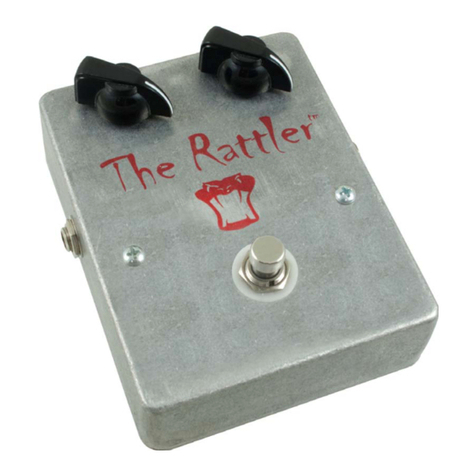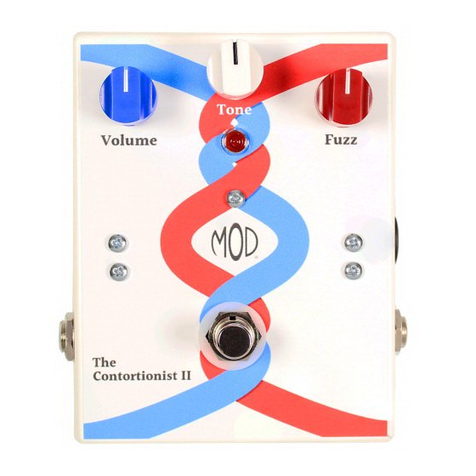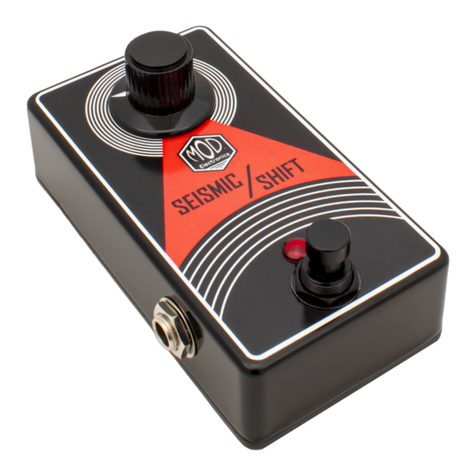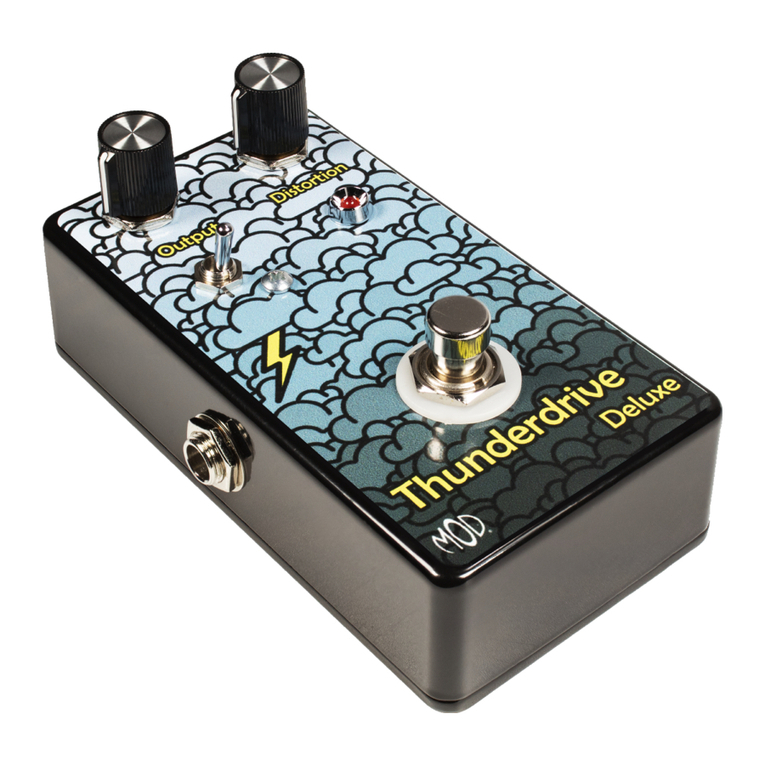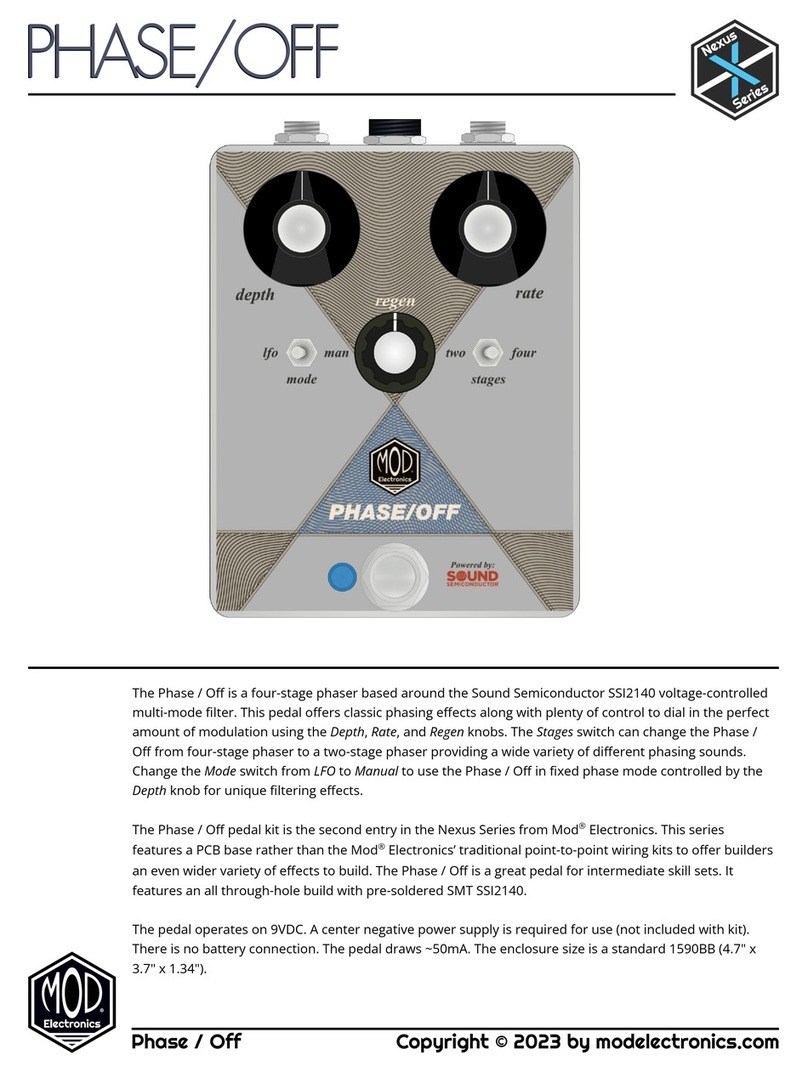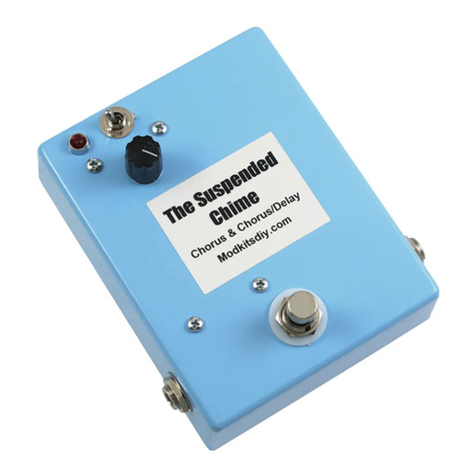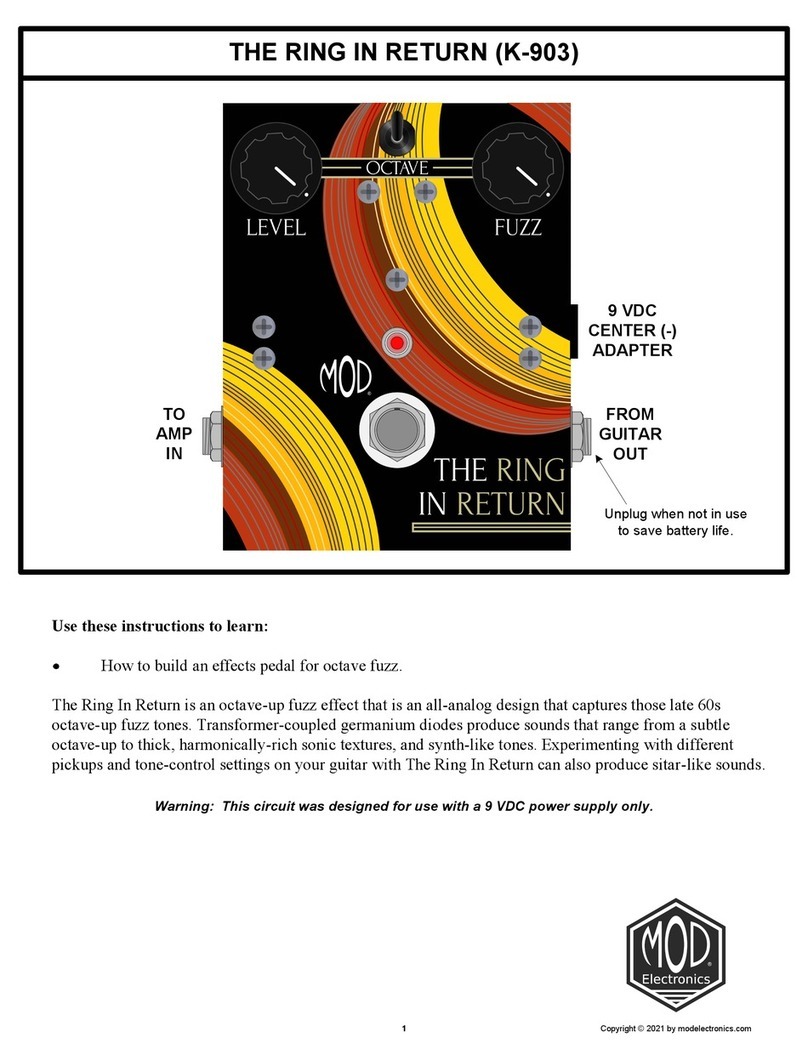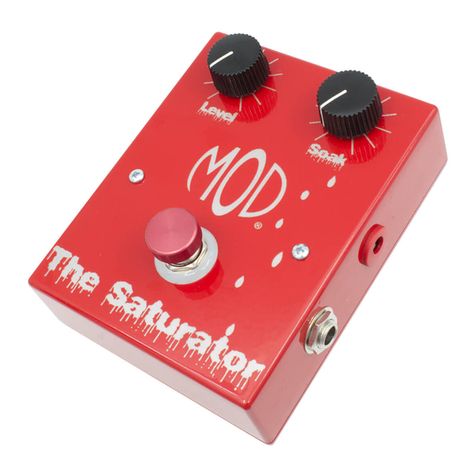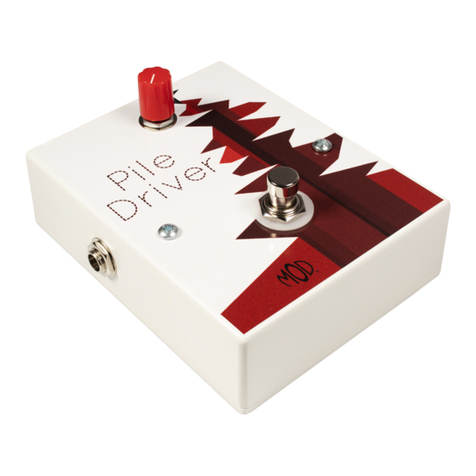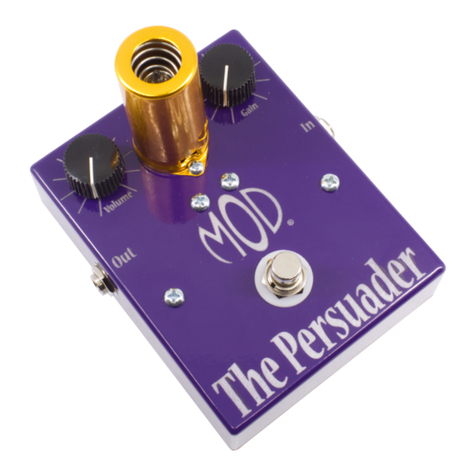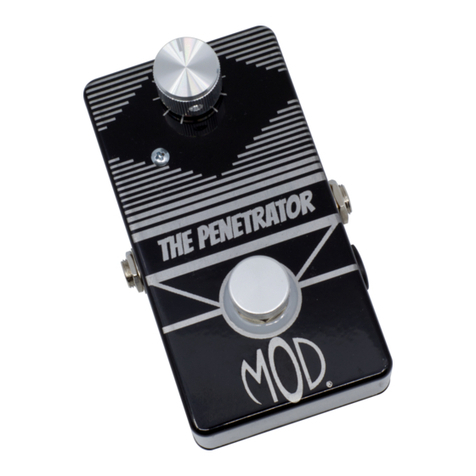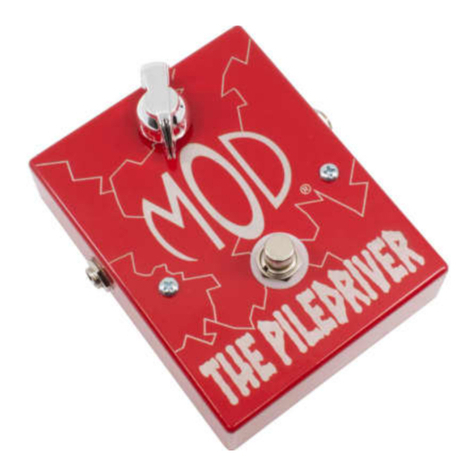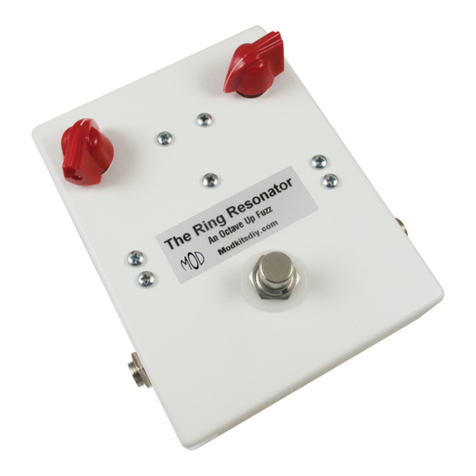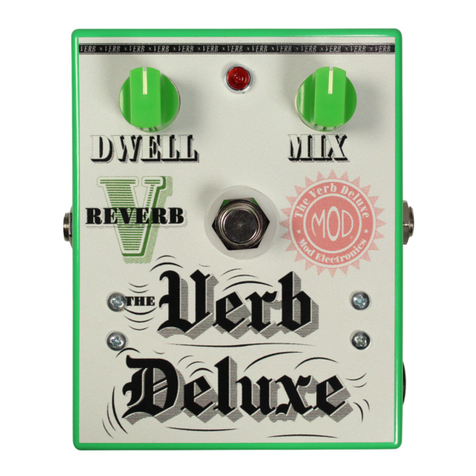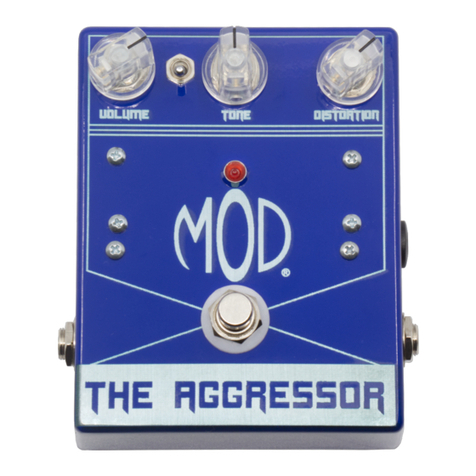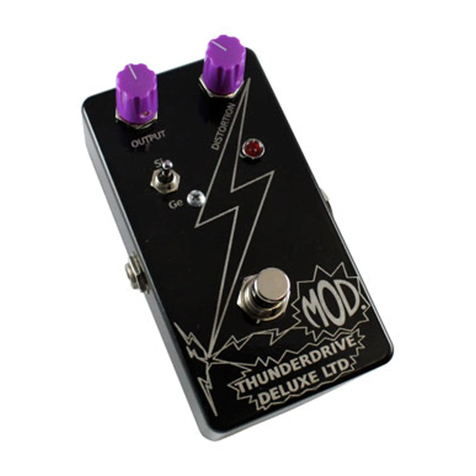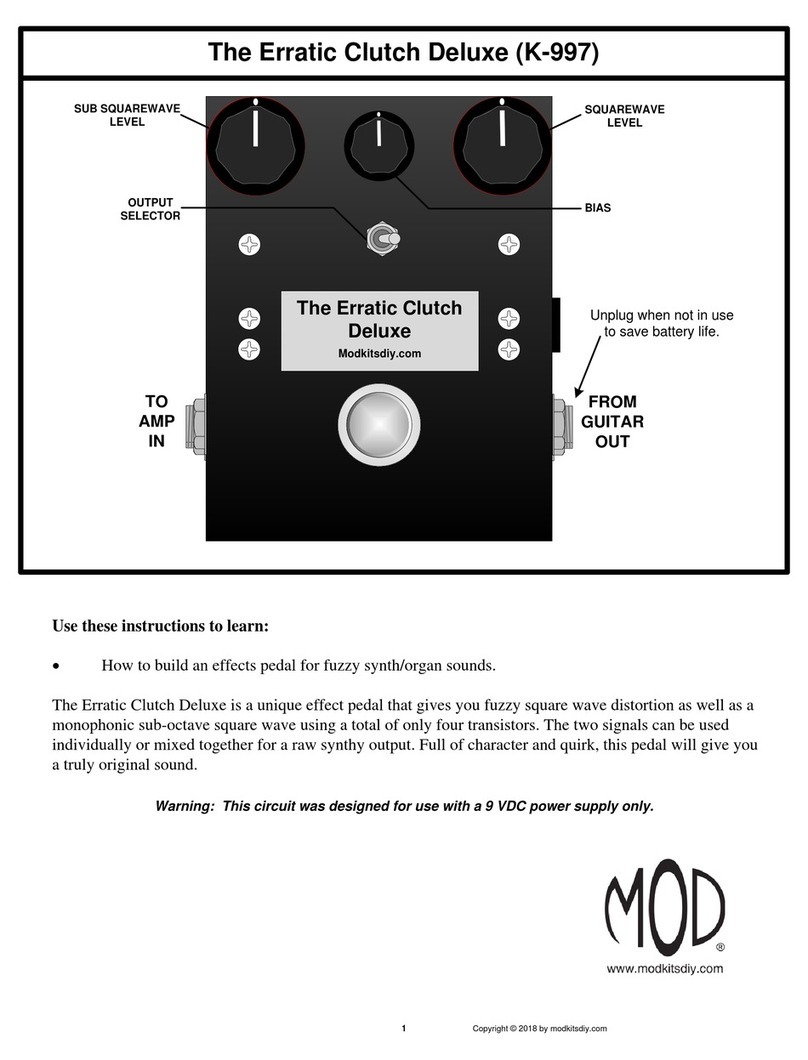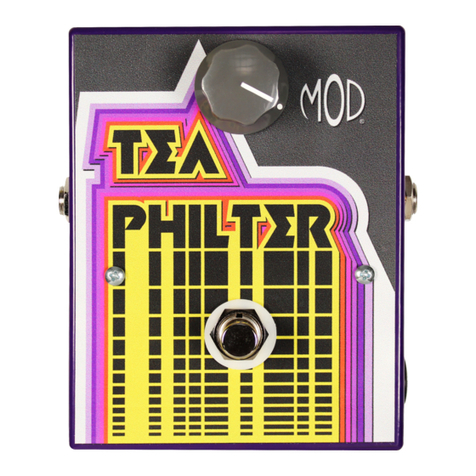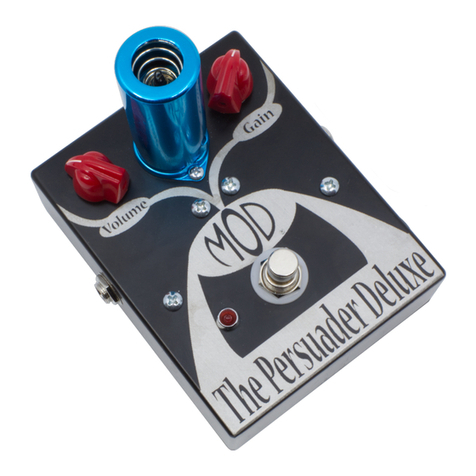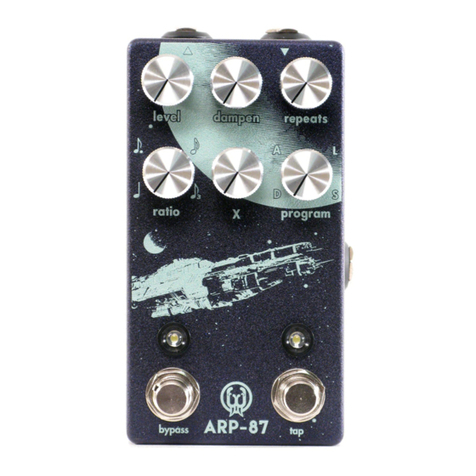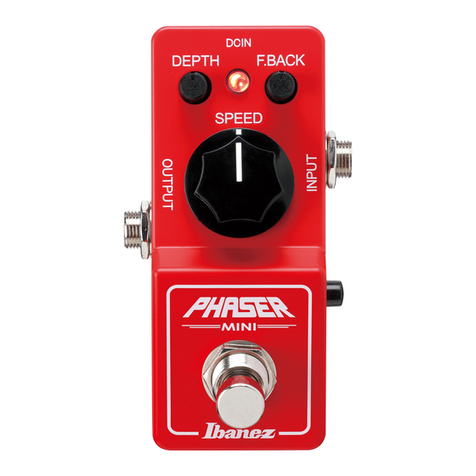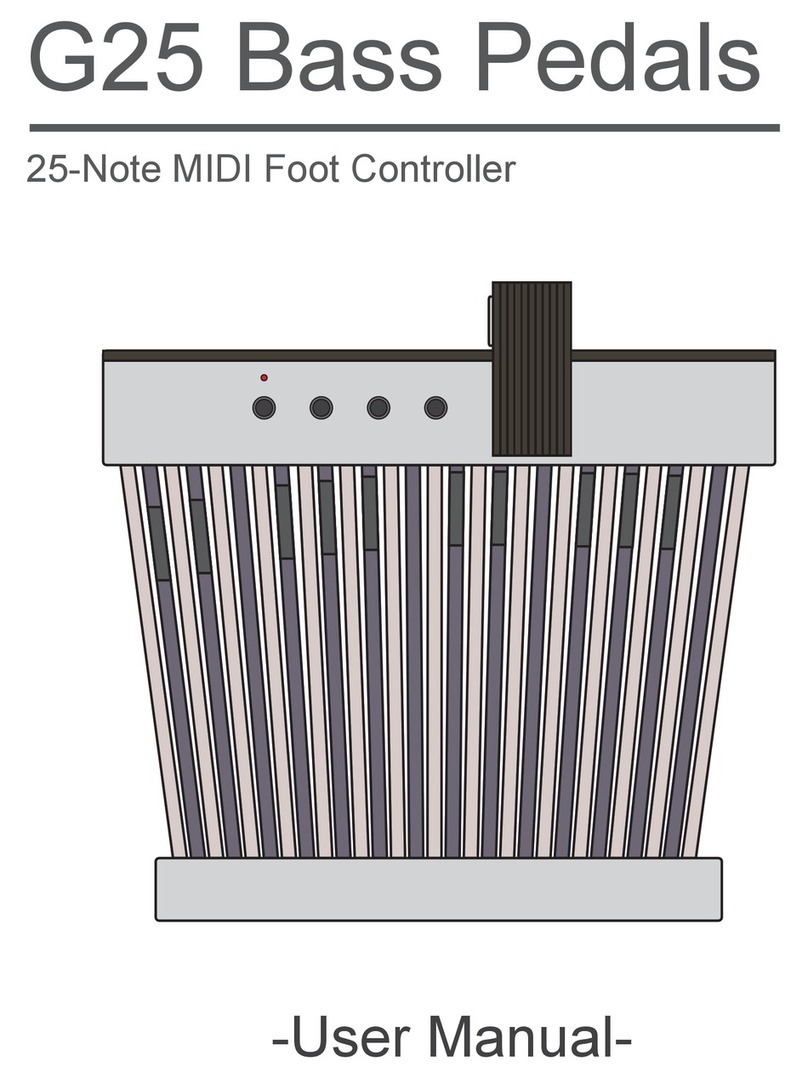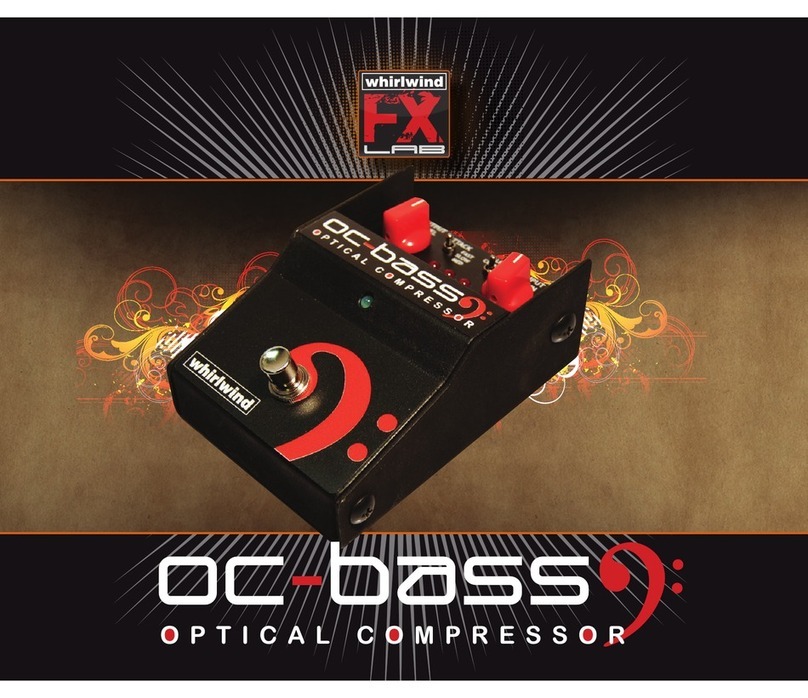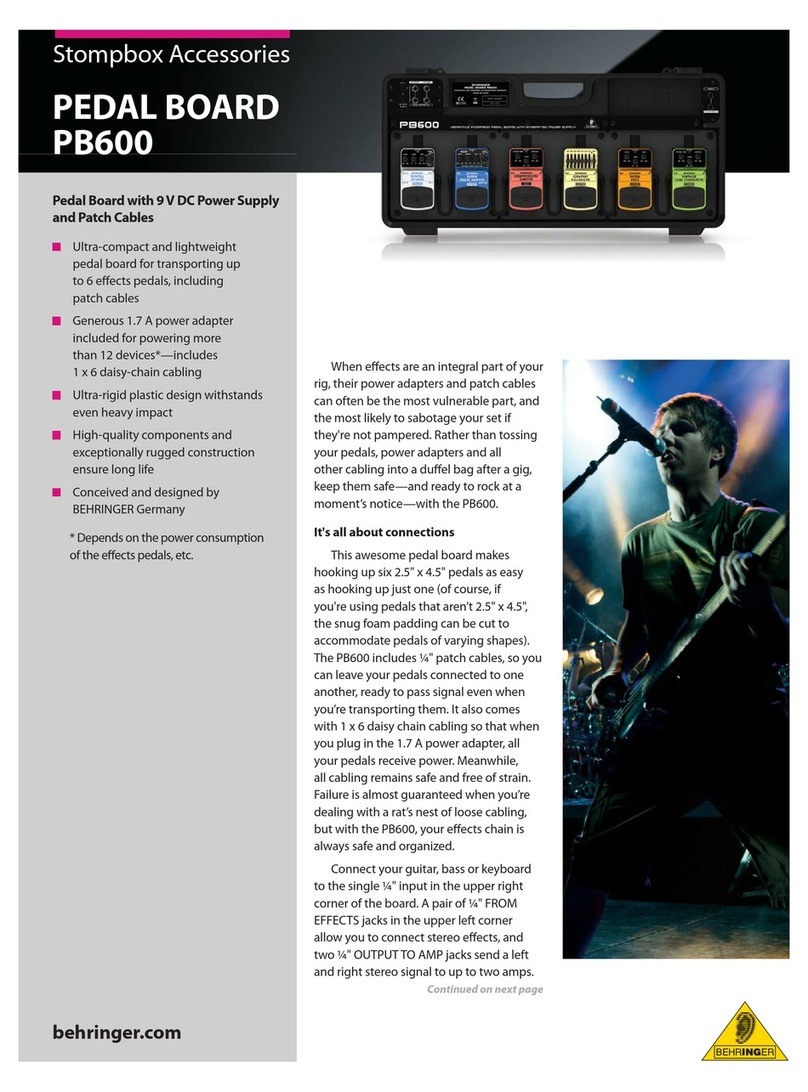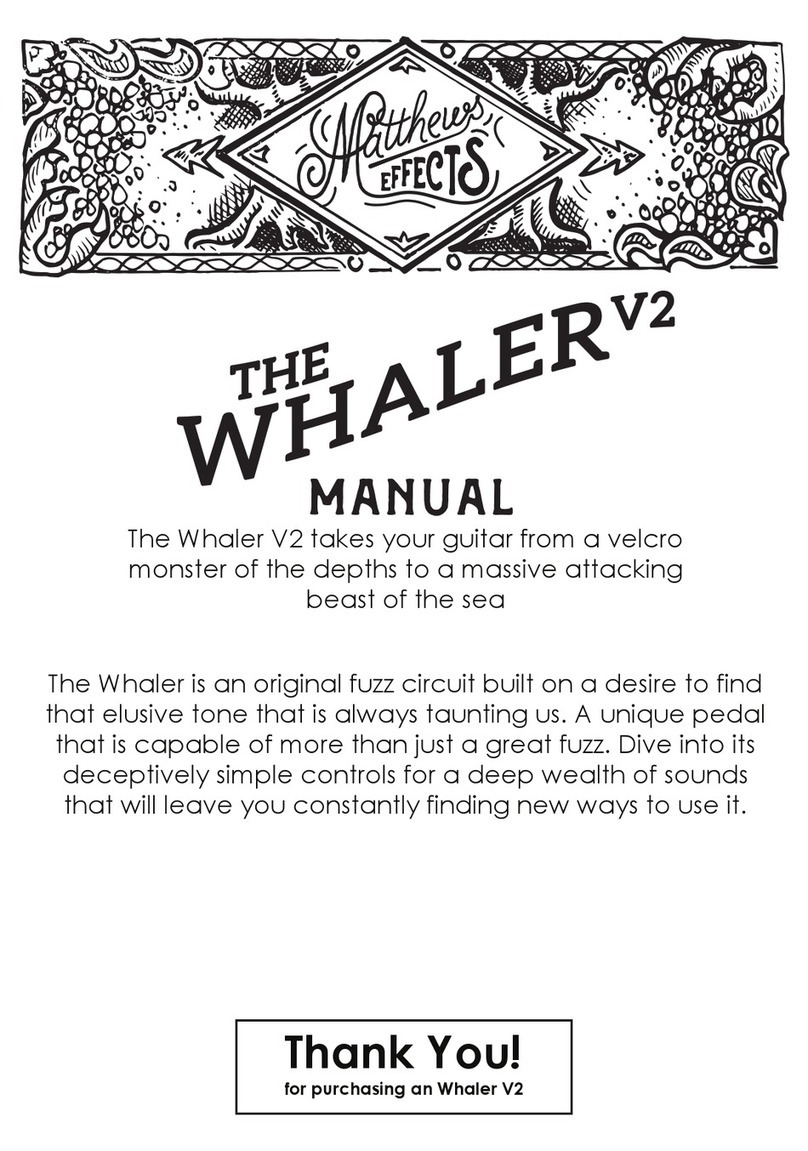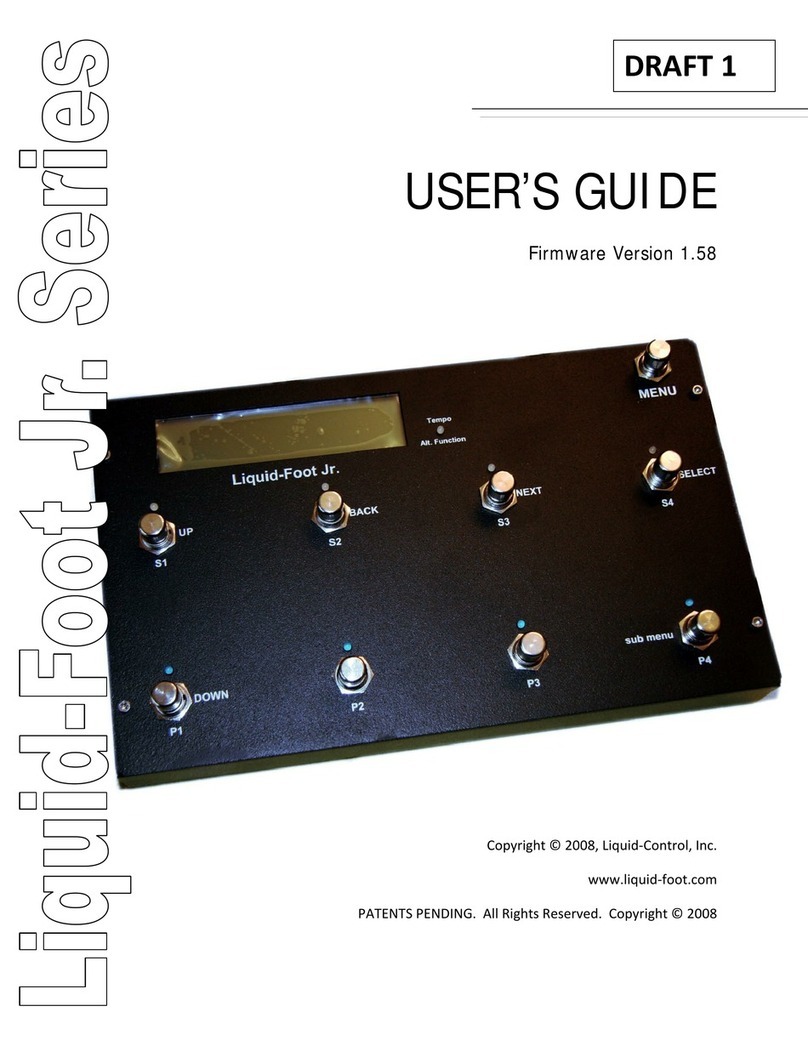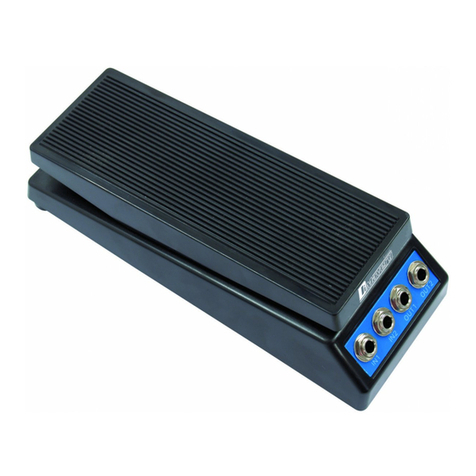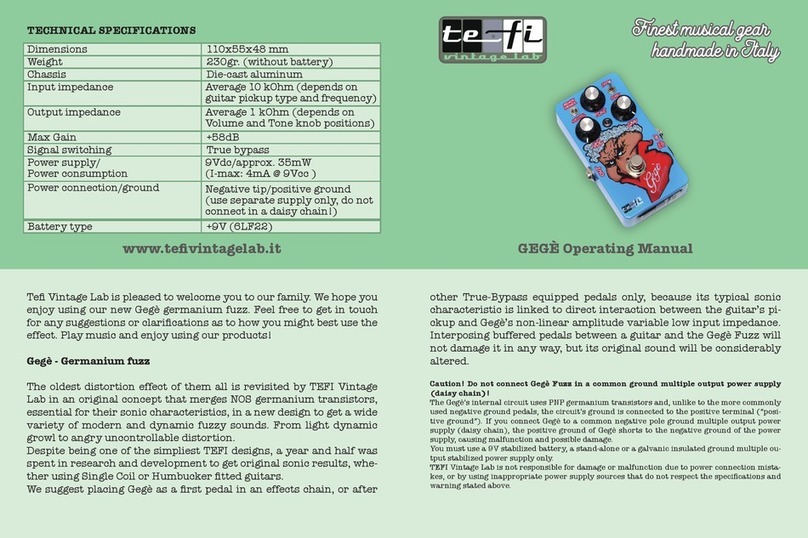
7
SECTION 1 - Wah Shell Assembly
Rack Assembly and Bumpers
Use the small screw, split lock washer and nut to attach the rack to the rack
mount with the teeth of the rack pointed toward the toe end of the treadle. The
split lock washer should be placed underneath the nut. Do not over-tighten the
nut so that the bracket can no longer swing freely.
On the treadle, use two of the self tapping screws and split lock washers to fasten the rack mount to
its mounting block in the same orientation as shown in the drawing.
It may be necessary to file off some aluminum flash from the surface of the treadle mount block surface so the rack
assembly will sit flush against the mounting block surface. (Because these are self tapping screws it will take
considerable pressure to get the screws in).
Mounting
Block
TREADLE INSIDE
SURFACE
Toe End of Treadle
Heel End of Treadle
With the Toe End of the treadle
directed away from you, fasten
the rack mount with its two
brackets oriented toward the left
side of the treadle.
Mounting
Block
Rack Mount
Lock Washer
Mounting
Block
Lock Washer
Bracket
Remove the paper backing on the felt pad and attach it to the treadle’s inside surface centered
between the two front bumper holders at the toe end. (This will cushion the footswitch when
turning the pedal on and off).
Front Bumper Holders
Remove the backing from the rear bumper and mount it in the hole on top of the holder centered
at the treadle’s heel end.
Treadle assembly is almost complete. We recommend that you wait until after completing the rest of the wah pedal
shell assembly before attaching the rubber tread to the outer surface of the treadle. It will take some time for the glue to
completely dry and it’s best not to handle the treadle while the rubber tread is still drying.
Using wire cutters or small scissors, clip off the top end of the
two front bumpers. The surface of the bottom end should be
fairly smooth, it will go into the front bumper holders.
Using contact cement or other pliable adhesive, attach the
modified front bumpers in the front bumper holders. If possible,
you should allow the adhesive to set up according to the
instructions on your adhesive before continuing assembly of the
pedal. You may want to put masking tape over them to keep
them in place if you wish to continue assembly without
interruption.
Front Bumper Modification
Top End
Cut Here
Bottom End
Keep this
surface fairly
smooth.
Bottom End
Before attaching any part with an adhesive, be sure to clean the mounting surface.
If you plan on painting the enclosure, do so prior to assembly and allow plenty of time for the paint to dry.
